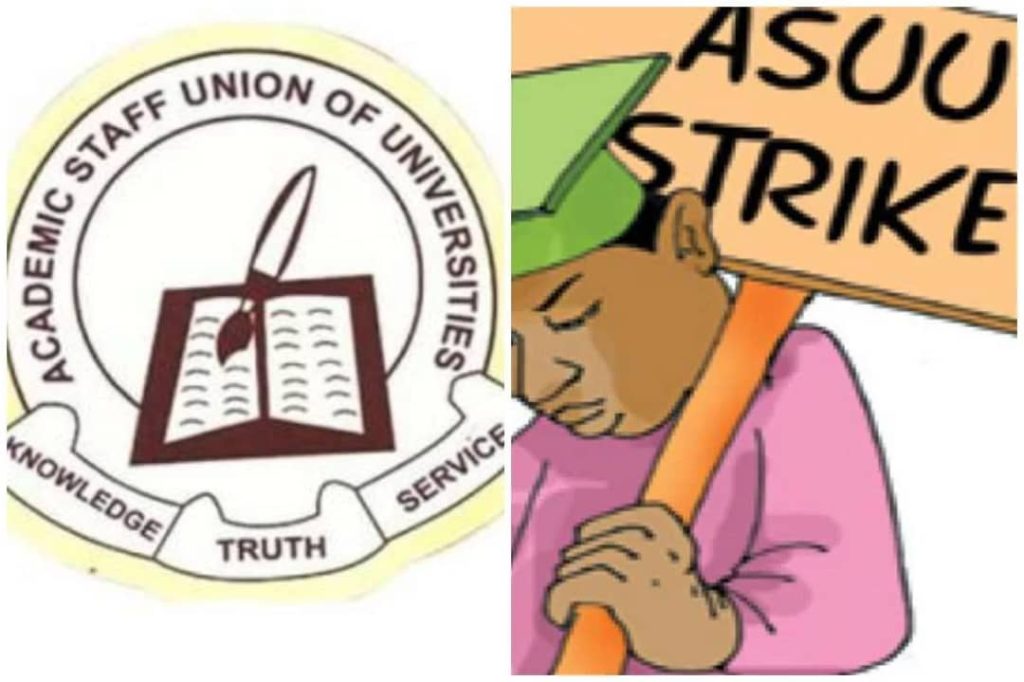Once again, the Academic Staff Union of Universities (ASUU) has embarked on what students now describe as the “inevitable semester break”, a nationwide pause button on education. While the government and the union exchange letters, meetings, and counter-statements, students across the country are left to navigate the familiar chaos with creativity, frustration, and, above all, humor.
Interestingly, the reactions of students to every ASUU strike can be classified into several distinct groups. Each category reflects a unique survival strategy for enduring academic uncertainty.
1. The Jubilant Rejoicers (“Strike Go Sweet Die” Association)
These are the students who treat every ASUU strike like a Christmas bonus. To them, the strike is divine intervention, an unscheduled holiday sent from heaven. They celebrate the announcement with posts like, “God has done it again!” or “We move, no lectures till further notice!”
Assignments are forgotten, lecture notes deleted, and bags packed within 24 hours. They travel home, start attending weddings, and open TikTok accounts. However, after a few months of sleeping, eating, and explaining to relatives why they are “still at home,” their joy begins to fade. The reality of an endless holiday sets in, and they start secretly wishing for lectures to resume though they’ll never admit it publicly.
2. The Concerned Scholars (a.k.a. “My Future Is on Hold” Committee)
These are the ones who truly believe in the power of education. They see the strike not as a holiday but as a national tragedy. To them, every passing week feels like a robbery of their future.
You’ll find them lamenting on social media: “By now, I should be writing my final exams!” Some even attempt to study on their own, creating study timetables that last about three days before reality sinks in. Their frustration is genuine, their hope admirable. But in a system that seems allergic to stability, their optimism often meets a hard landing.
3. The Opportunistic Entrepreneurs (“No Time to Waste” Coalition)
These ones waste no time mourning. The strike, to them, is not a delay, it’s a business opportunity. By the second week, they’ve opened Instagram shops, started food deliveries, or joined the ever-expanding league of forex traders and crypto enthusiasts.
Their WhatsApp statuses become mini-billboards: “Now taking orders for Ankara gowns.” or “Investment packages available, DM for details.” They may not remember what “continuous assessment” means anymore, but they can calculate profit margins without blinking. For many of them, school resumption becomes the real disruption.
4. The Indifferent Observers (“Whatever Happens, Happens” Movement)
These are the unbothered philosophers of the student world. For them, life simply continues, strike or no strike. They can spend months at home watching series, scrolling through social media, and perfecting the art of doing absolutely nothing.
When asked how they feel about the strike, they’ll shrug and say, “At least we’re not writing exams.” They exist in a peaceful state of academic apathy, sustained only by memes and noodles.
5. The Final-Year Veterans (“God Abeg, I Don Tire” League)
These are the ones who have seen it all and would rather not see any more. They were preparing for project defense when the strike hit, some had even printed their dedication pages. Now, their projects sit on their laptops like abandoned dreams.
Their parents have begun to doubt whether they’re still students, and some of them have started applying for jobs that require “at least ND or equivalent,” simply to feel employed. Every new ASUU announcement feels like a personal insult. They are emotionally exhausted, academically drained, and spiritually finished.
6. The Activists (“We Must Protest” Vanguard)
Finally, there are those who see every strike as a call to arms. They take to social media and the streets, tweeting hashtags like #EndAcademicDelayNow and #SaveOurEducation. They quote Karl Marx and Chinua Achebe interchangeably, organize meetings, and sometimes hold “peaceful protests” that mysteriously end up as dance parades.
Though their passion is commendable, their activism rarely goes beyond strongly worded tweets. Still, they keep the conversation alive and perhaps that’s something.
A Nation on Pause, A Generation in Progress
The ASUU strike, for all its economic and emotional toll, has also become a reflection of Nigerian resilience. Students have learned to adapt, to create, to hustle, to laugh through uncertainty. The situation, though tragic, has produced a generation that knows how to improvise when institutions fail.
As the government and ASUU continue their negotiations, one truth remains clear: Nigerian students are not just victims of the strike. They are survivors of a system that has turned unpredictability into a curriculum of its own.
Until lectures resume, the nation waits. And while education may be on hold, the creativity, humor, and endurance of Nigerian students remain very much in session.




